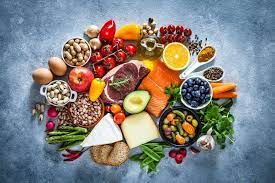Research shows that plant-based diets can be beneficial in preventing disease. There is much to be said about the importance and benefits of fruits, vegetables, but little about dried seeds that can be used in food.
The result of plant reproduction is the seed. Seeds are plant embryos that are enclosed in a seed coat. The three main parts of the seed are the germ (embryo), the endosperm (nutrient stored for the germ to grow) and the seed coat. Each seed has the potential for germinating and growing into a mature plant.
The use of seeds in your diet
Many of the most common food sources, including grains and legumes, are seeds. Barley, oats and rice, and legumes such as beans and soybeans are all crops grown for their edible seeds. Many of the nuts we consider nuts, like cashew nuts and pistachio nuts, are seeds.
Human consumption of seeds is very flexible. Some types can be pressed to produce oils (e.g. sunflower oil) or sprouted for human consumption (e.g. watercress). You can also eat other seeds whole. This article will cover these ready-to-eat dried seed types (e.g. linseeds and poppy seeds, and pumpkin, regardless of their botanical classification.
Seeds contain nutrients
The role of seeds in nutrition and protection is reflected in the nutritional composition of the seeds. The germ and the outer layer are rich in vitamins, minerals and bioactive compounds. The main energy store for seeds is the endosperm. It contains all the necessary nutrients, including carbohydrates, proteins, and fats. Although the nutrient content of seeds varies, most contain high unsaturated fatty acids. Although the protein content is high in essential amino acids, vegetable protein has a lower biological value than animal protein. The carbohydrate level is low. There are many vitamins and minerals in seeds. Some seeds like linseeds must be ground up or mixed before being eaten to release nutrients. Otherwise, they will pass unabsorbed through the body. Below is a table that shows the nutritional content of different seeds. Seeds also contain various bioactive components, including polyphenols and phytosterols, which are needed to build the cell membrane and protect the seedling and its DNA from damage.
Consume seeds
Most dietary surveys group seeds and nuts together. The European Prospective Investigation into Cancer (EPIC) study shows wide variation in the intake of nuts and seeds. The average daily intake of peanuts, tree nuts and seeds is between 1 and 300 grams. However, the average intake in Northern European countries is lower (15 g/day in Sweden) than in Spain (35 g/day). The EPIC study showed that around 75% of the European population eats tree nuts, peanuts and seeds, with the Netherlands highest (94%).1
Dried, ready-to-eat, pre-cooked seeds are generally consumed in small amounts and are therefore not considered a significant contributor to the dietary intake of phytonutrients or micronutrients.
Seeds and your health
Few studies have specifically linked seeds to health, and there is no way to link ready-to-eat dried seeds to better health. Nevertheless, a recent review concluded that there is substantial evidence that greater consumption of seeds (including whole grains, nuts, legumes, cocoa products, and coffee) is linked with a lower risk of type 2 diabetes and cardiovascular disease risk factors. In addition, consumption of nuts as part of a Mediterranean diet has reduced major cardiovascular complications (heart attack, stroke and death). The EPIC study found that women who consumed the highest seeds and nuts had a lower risk of colorectal cancer.
Advice on diet
Ready-to-eat seed can be a good source of nutrition and energy but should not be taken in excess as part of a balanced diet. A small number of people have an allergy to seeds. EU law requires that food labels contain information about foods containing sesame seeds or products containing them and any other allergens on the list, such as nuts.

